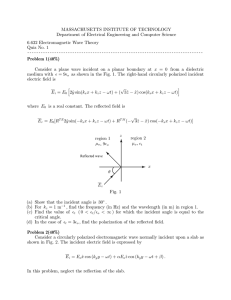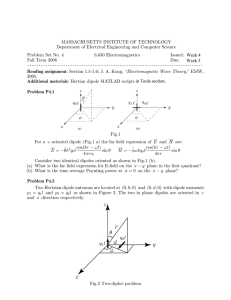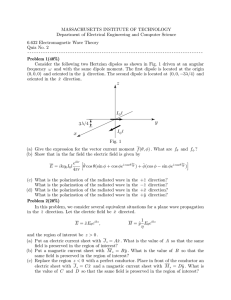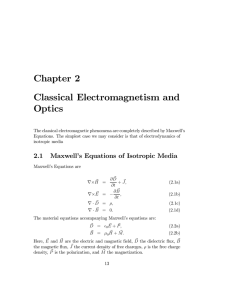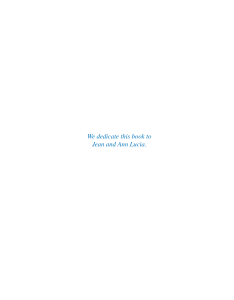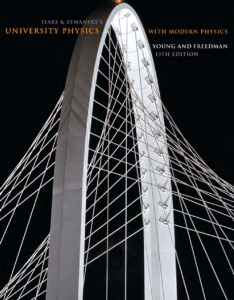Document 13503889
advertisement
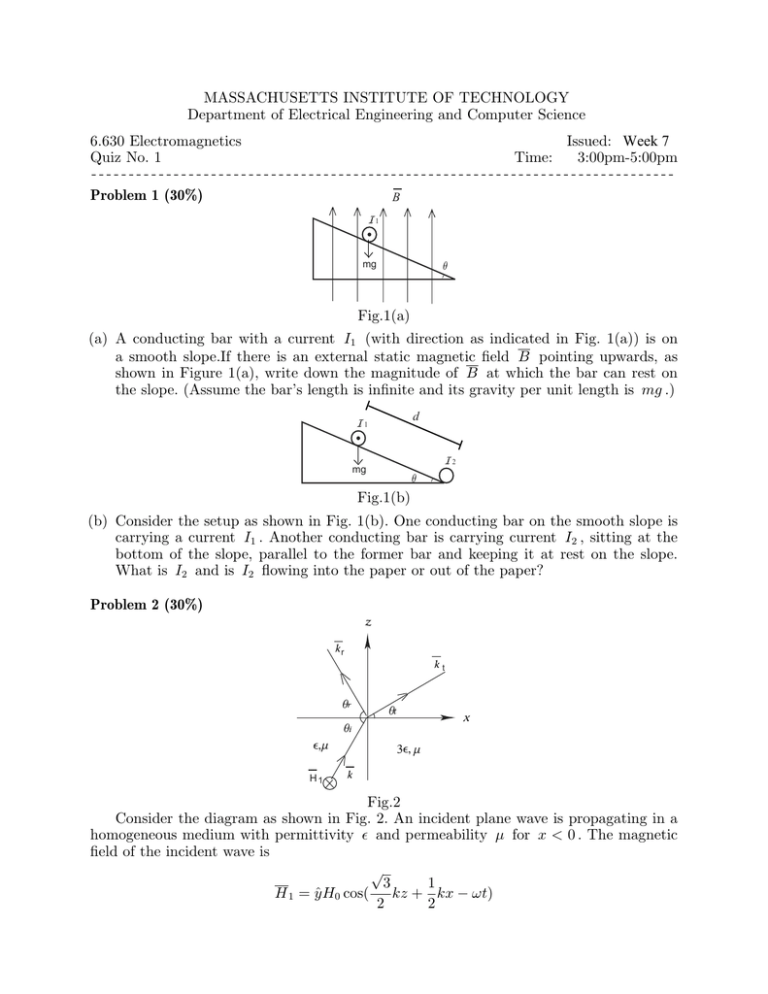
MASSACHUSETTS INSTITUTE OF TECHNOLOGY Department of Electrical Engineering and Computer Science 6.630 Electromagnetics Issued: Week 7 Quiz No. 1 Time: 3:00pm-5:00pm -----------------------------------------------------------------------------Problem 1 (30%) B �1 mg θ Fig.1(a) (a) A conducting bar with a current I1 (with direction as indicated in Fig. 1(a)) is on a smooth slope.If there is an external static magnetic field B pointing upwards, as shown in Figure 1(a), write down the magnitude of B at which the bar can rest on the slope. (Assume the bar’s length is infinite and its gravity per unit length is mg .) d �1 �2 mg θ Fig.1(b) (b) Consider the setup as shown in Fig. 1(b). One conducting bar on the smooth slope is carrying a current I1 . Another conducting bar is carrying current I2 , sitting at the bottom of the slope, parallel to the former bar and keeping it at rest on the slope. What is I2 and is I2 flowing into the paper or out of the paper? Problem 2 (30%) � � r � �� �� t � �� ��� H1 ��� � � Fig.2 Consider the diagram as shown in Fig. 2. An incident plane wave is propagating in a homogeneous medium with permittivity and permeability µ for x < 0 . The magnetic field of the incident wave is √ 1 3 H 1 = ŷH0 cos( kz + kx − ωt) 2 2 (a) Write out the k vector and the electric field E 1 of the incident wave. (b) Is the incident wave a TE or TM wave? (c) The half space x > 0 is filled with another material with permittivity 3 and perme­ ability µ . What’s the reflection coefficient? (d) Suppose the incident electric field is now E = E 1 + E 2 . Find E 2 such that E is a right-hand circularly polarized wave. (e) If the wave is incident from the half space x > 0 instead of incident from the half space x < 0 , what is the range of incident angles for which total reflection occurs? Problem 3 (40%) Two Hertzian dipole antennas are located at (0, 0, 0) and (0, 0, d) with dipole moments p1 = q1 l and p2 = q2 l as shown in Fig. 3. The two in-phase dipoles are oriented in z and x direction respectively. � r q2 θ d � x q1 Fig.3 (a) For the x -oriented dipole, the far field ( r 1 ) expression of electric field on the yz -plane is: k 2 q2 E 2 = x̂ cos(k y 2 + (z − d)2 − ωt) 4πr0 √ Show that as d y 2 + z 2 = r , E 2 = x̂ k 2 q2 cos(kr − kd cos θ − ωt) 4πr0 (b) Find the total far field expression of electric field E on the yz-plane generated by both dipoles. (c) Let q1 and q2 be real and positive. On the yz-plane, if the far field E for θ = 60◦ is circularly polarized, (i) Find the minimum d in terms of λ . (ii) What is the ratio of q1 /q2 ? (iii) Specify the handness of the circularly polarized wave.
